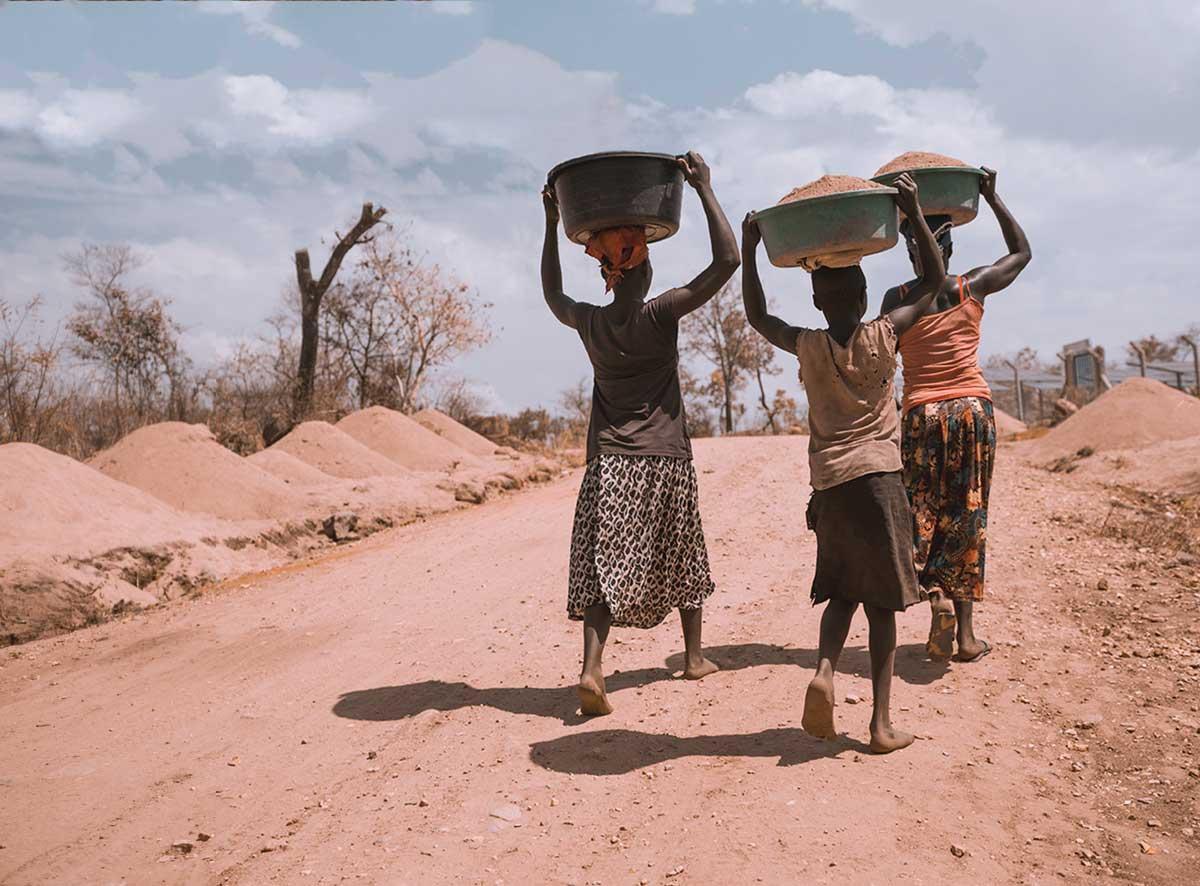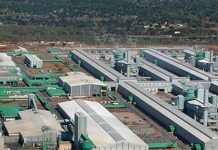BY
NIKITA PANIN
Africa-Press – Mozambique. Today’s world is going through major transformations. Among the most sensitive issues remains the availability of food and the challenges tied to it. In the past few years, such a seemingly basic problem has become more complicated to achieve for many countries.
Global economic challenges and the accompanying politicization of international cooperation, across virtually all areas, have undermined the effectiveness and transparency of existing market mechanisms. Rather than giving way to a new sustainable model, these mechanisms have been replaced by chaotic processes: in this sense, every country does whatever it can and cooperates with whomever it can.
Food security has emerged at the fore of discussions over the past year, especially when imbalances in food and fertilizer markets have become obvious, coupled with logistics challenges and export restrictions. All of that has primarily affected the world’s most vulnerable countries, mostly located in Africa.
Dependency on food imports
This is not some hackneyed slogan but plain facts. Most African countries are now in the phase of active demographic growth—in fact, nations faced with the more acute domestic challenges show the greatest rates of demographic growth. In 2022, the population of Niger grew by 3.71%, that of the Democratic Republic of the Congo (DRC)—by 3.2%, and that of Angola and Mali—by 3.1%. In percentages, this may look like a modest increase, but it comes to 5.75 million people, and that’s only in the four countries.
As is often noticed, this situation promises economic growth in the future. In the moment, however, this also places a burden on the existing social system. Africa’s population is getting younger, and children require more nutrient-rich foods. Some 63 million African children under the age of five are stunted. Half of these children come from five countries: Nigeria (19%), the DRC (12%), Ethiopia (10%), Tanzania (5%) and Angola (4%).
Predictably, this means that Africa is increasingly dependent on food imports. 36 African countries spend most of their export revenues on food imports, while food imports swallow up over 40% of export revenues in 19 countries. In Ethiopia, for example, the total value of food imported in 2019–2021 amounted to 81% of the value of the country’s exports. This highlights Addis Ababa’s extreme dependence on the global market. Given that Ethiopia is a landlocked country, the problem becomes even more acute. Dependence of island states on food imports is just as high. Mauritius, commonly considered a “success story in Africa,” spends 38% of its export revenue on food imports, which is 52% more than ten years ago.
Comparing the key indicators of the current state of food security with the case ten years ago (2012), it becomes obvious that things have turned a lot worse. Across the African continent, the estimated number of malnourished people has increased 1.7 times to exceed 262 million people. Such negative dynamics is typical even for the countries of Northern Africa, which are home to 11.1 million malnourished people. This is almost one and a half times more than ten years ago. The situation has to do not only with the difficult humanitarian situation in Libya but also with food supply-related challenges in Egypt and Morocco. Although, of course, on a larger scale, Africa’s main problem lies elsewhere.
How many people in Africa do not have enough food?
The situation is the most complicated in Eastern Africa and Western Africa, where almost 35% and 23% of the population are malnourished, respectively. Over the past 10 years, the situation in Uganda has become twice worse, in Kenya—1.8 times worse, and in Tanzania and Ethiopia—1.5 times worse. In Ethiopia, there are at least 26.4 million malnourished people. All of that comes down to a total of 70.5 million people—and that’s not counting Sudan, where the armed conflict that began in April 2023 prevents us from fully assessing the situation.
In Western Africa, the situation is most difficult in Nigeria, a country that has the biggest population in the region. The number of Nigerians who fail to eat properly has increased twofold and reached 34 million people. The situation is also growing worse in countries like Niger, Benin, the Gambia and Sierra Leone.
Unfortunately, reliable data sources are not available for all countries, especially given the wave of political changes that swept through the subregion in 2022–2023. The DRC (with almost 34 million malnourished people) and Madagascar (with almost 15 million) remain the major concern.
However, these figures are only the tip of the iceberg, since they show the general trend rather than the real scale of the problem. The Food and Agriculture Organization (FAO) suggests the situation has—in the course of the past 10 years—slightly improved only in Namibia, Eswatini, Djibouti, Ghana, Ivory Coast and Senegal—in other words, in six countries out of 54.
The figures become even more frightening if we replace the official term “undernourishment” with the notion of “severe food insecurity”—an assessment category based on the opinion of Africa’s population, according to household survey responses. Such surveys demonstrate that some 890 million people in Africa face severe food insecurity, which is about 60% of the continent’s entire population. Nigeria (260 million people), the DRC (226 million), Ethiopia (145 million), Tanzania (98 million) and Kenya (85 million) face the greatest challenges, and over 50 million people suffer from this problem in six other countries in the region.
Why water access is important
The food issue is closely associated with water access. There is no life without water, and so the most arid areas prone to climate change should have adequate water access. But another important aspect is effective farming, which is also impossible without water.
Water availability has somewhat improved in recent years, and the average 70% of the population in African countries have access to basic water services. This does not mean, however, that such water sources are completely safe for consumption. According to FAO estimates, only 19% of the population of the DRC, 12.6% of the population in Ethiopia, 6.2% of the population in Central African Republic (CAR), and 5.6% of the population in Chad have access to safe water sources. In the Republic of the Congo, that number is 46%—one of the best indicators in the region.
The people who didn’t make it into the “lucky” categories face an increased risk of cholera, dysentery, hepatitis A, typhoid fever, and other serious diseases. According to official data, in 2019, poor water quality caused 10% of all deaths in Chad, 9.5% of deaths in CAR, 8.2% in Niger and South Sudan, and 7% of deaths in Nigeria.
Take the current situation in Zambia. As a result of an ongoing cholera outbreak, 351 people have died, with more than 9,000 have become sick, schools have been closed and church services paused. Last year, the people of Malawi, too, faced the worst cholera epidemic in the country’s entire history, so this is not an isolated case.
Moreover, the data mentioned only characterizes the period from 2019–2022. In other words, it does not account for the political turbulence and market complications which arose in 2022–2023.
Food security: why importing more food does not equal feeding people
Although food security has come to light rather recently—mainly, against the background of other failures of the international system—the foundation of what is known as “food sovereignty” was laid back in 2007. Symbolically, this happened in Africa, at an international forum held in Mali and attended by participants from over 80 countries. The accepted definition of “food sovereignty”, a key outcome of the forum, contains several important elements that can help us find solution to this acute problem.
First, one of the principles of food sovereignty is that all peoples have the right to healthy and culturally appropriate food. When it comes to Africa, we must note certain details. For example, in recent decades, crop consumption in Africa has been influenced by European and Asian consumption habits. Europeans and Asians mainly consume wheat and rice. Although Sub-Saharan Africa accounts for only 11.6% of global wheat imports and 21.8% of rice imports, consumption of these products is steadily increasing. Over the past 10 years, wheat imports to Sub-Saharan Africa have grown 1.7 times, which even exceeds the overall growth rate of imported food.
This is a major aspect of food security because wheat and rice are produced outside of Africa, and so imports depend on external suppliers and market conditions, including political aspects. This is and may be a serious blow to Africa’s food sovereignty.
If a country still manages to import the product that is not grown at home, it does not mean that it will feed its people. Unpredictable import conditions often lead to increases in food prices domestically. According to the IMF, food inflation was about 24% in 2020–2022 and increased to 29% over the past year. Countries in Northern and Western Africa are particularly vulnerable when it comes to food inflation, which directly affects their standard of living. Moreover, problems are caused not only by food inflation but also by the shortage of fertilizers.
Sanctions pressure
In 2022–2023, the global fertilizer market found itself in a sort of limbo. Estimates show that sanctions resulted in countries across the world failing to receive 25 megatons (Mt) of fertilizers, and a third of the losses were due to logistics problems caused by the sanctions. The fertilizers were available, yes; but they were shipped with delays and there were many impediments on the way.
A recent Food Security Report, put together with the help of the Pan-African Parliament, shows the shifts that have occurred in the global fertilizer markets and what they mean for countries most in need of these fertilizers. In particular, the report claims that just one undelivered kilogram of fertilizers translates into the loss of seven kilograms of harvest. And shrinking harvests make these governments even more dependent on foreign markets, since they need to compensate for the losses. Ultimately, it’s Africa’s malnourished population that has to pay for all this.
Second, it was determined at the 2007 Mali Forum that all peoples have the right to define their own food and agriculture systems. Yet so far, due to several reasons, few countries have attained this goal.
On the one hand, food markets are controlled by large corporations, which dictate their rules to import-dependent governments. For example, the wheat trade has been monopolized by a group of four companies known as ABCD (Archer Daniels Midland, Bunge, Cargill, and Louis Dreyfus).
Since these corporations determine the logistics chains and control information about the quantities of available grain, African countries find themselves largely dependent on supplies from the Euro-Atlantic region, where about two-thirds of all shipments come from. This creates certain disparities between the producers and suppliers of grain.
The report also emphasized that the situation has been aggravated by sanctions. It confirmed the views frequently expressed by Russian diplomats: market challenges have primarily affected the world’s most vulnerable players, since the EU and the US could meet their needs at any cost, simply by increasing purchases of both grain and fertilizers. As a result, though, grain and fertilizers hardly reached African markets, notably because of the considerable increase in prices. It is not surprising that the authorities of Ethiopia, Mozambique, the DRC, Nigeria, and other countries complain about serious humanitarian problems caused by food shortages.
Diversifying food import sources and creating a domestic agricultural base
In any case, a food security system that guarantees the nation’s sovereignty cannot be built without diversifying supply sources and obtaining information about them in a timely manner. Since, market mechanisms don’t always work in the current conditions, solutions more often depend on bilateral agreements at the national level.
For this reason, Russia’s recent free shipments of grain to Africa’s most vulnerable countries may be seen not only as acts of friendship, partnership, and humanitarian relief, but also as a signal regarding further supplies a practical example demonstrating that Russia is able to ship grain to Africa even without the grain deal, and even considering the challenges with insurance and freight chartering.
On the other hand, the diversification of food supplies does not reduce Africa’s overall dependence on other countries. What can help is the development of a domestic agricultural base, which is particularly important for those countries where the soil is not suitable for efficient farming.
On average, 15% of all land in Africa is arable (however, in countries such as Botswana, Namibia, Gabon or the Republic of the Congo this number is less than 1.5%). However, only 1% of these lands are irrigated on average. Traditional farming practices still prevail in many African countries, and this impedes productivity and doesn’t guarantee a stable harvest from year to year.
Using modern fertilizers and developing logistics infrastructure
The situation can be changed only by using modern fertilizers. According to the mentioned report, the 32.9 megatons (Mt) of Ukrainian grain ensured by the Grain Deal has fed 95 million people, while the 10.7 mt of Russian fertilizers that were not delivered could have fed 199 million people. The difference is obvious, and it is not surprising that Africa’s demand for fertilizers is increasing.
In 2020, fertilizer supplies to Africa amounted to 7.2 mt, but, due to an 85% price growth, supplies dropped to 3.8 mt by 2022, which is comparable to 2018. So while the region’s population has grown and its needs have increased, the availability of fertilizers has rolled back to 2018 indicators. However, for the situation to really change, fertilizer usage must become more consistent: currently, 60% of the overall volume of fertilizers is used only by five countries (Egypt, South Africa, Nigeria, Ethiopia, and Kenya). Logistics usually plays a key role, so food sovereignty is impossible without the necessary infrastructure.
The development of port and railway infrastructure across Africa and its connection with supply channels, as well as the development of processing and packaging facilities, and improved technical literacy are all components of food sovereignty. Russia is ready to share technologies with its partners in Africa, and Russian companies are interested in sharing their experience in precision farming, plant breeding, and digital solutions. Moreover, a growing number of African students are studying agriculture in Russian universities.
Food sovereignty does not imply food autarky. It would not be possible to replace the entire volume of food imports into Africa, given their scale. But the gradual diversification of supplies (which takes into account the concerns of all parties), the construction of the necessary infrastructure, and building internal capacity can help change the situation over time.
In the past year, Russia has demonstrated that it is ready to travel this path together with its African partners and has emerged not only as a reliable supplier but also as a partner willing to share its experience and competencies on an equal footing.
moderndiplomacy
For More News And Analysis About Mozambique Follow Africa-Press






